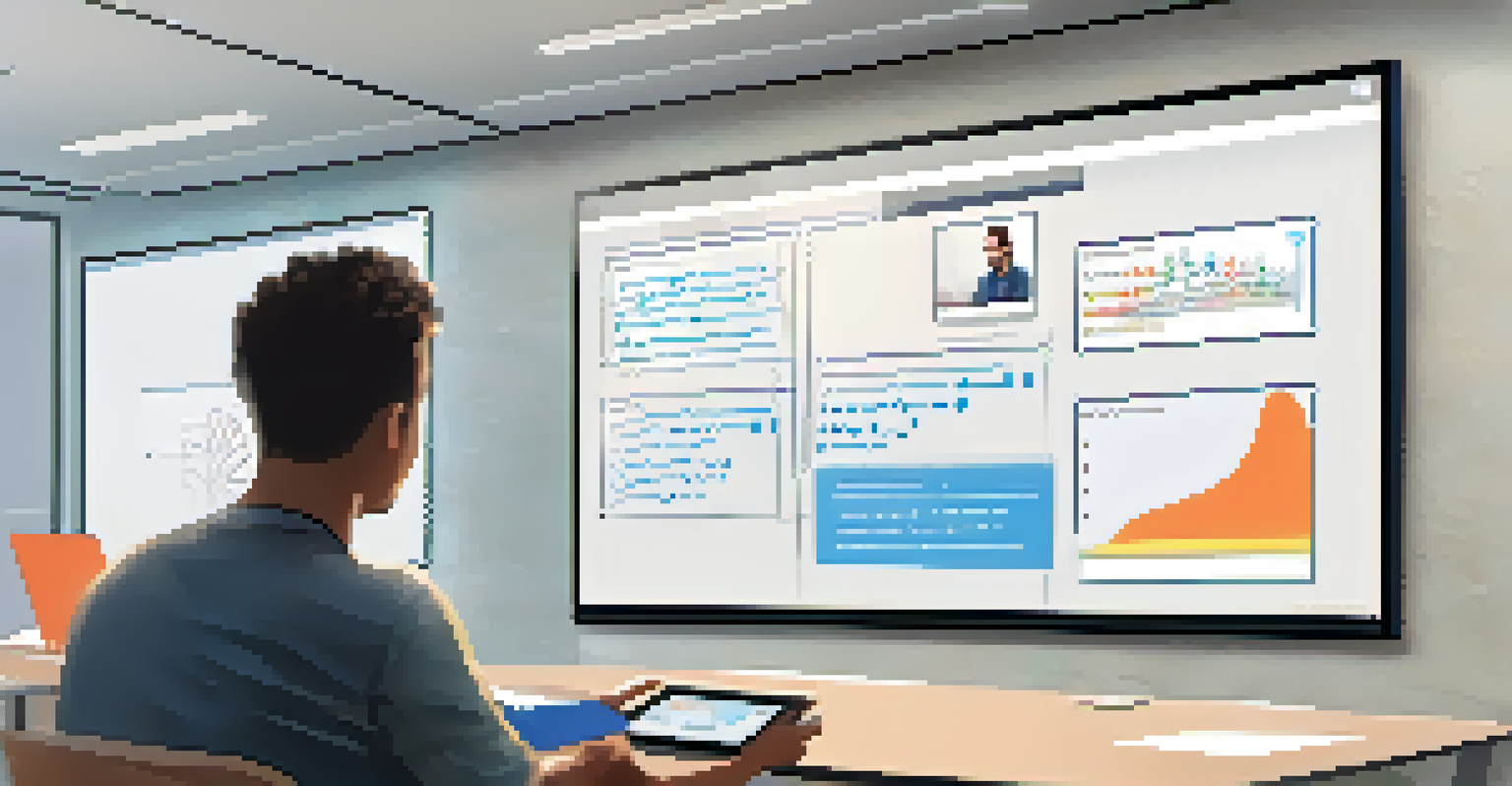Using Design Thinking to Enhance Business Innovation Strategies

What is Design Thinking and Why It Matters
Design thinking is a user-centered approach to problem-solving that emphasizes empathy, creativity, and experimentation. It's not just for designers; businesses across various sectors can use it to innovate and improve their strategies. By placing the user at the heart of the process, companies can better understand needs and challenges, leading to more relevant solutions.
Design is not just what it looks like and feels like. Design is how it works.
This methodology encourages teams to consider multiple perspectives and brainstorm ideas without judgment. Think of it as a way to break down silos and foster collaboration among departments. The result? A more agile and responsive business that can pivot quickly in today's fast-paced market.
Ultimately, design thinking can drive innovation by encouraging businesses to step into their customers' shoes. It’s about creating an emotional connection, which can lead to greater loyalty and satisfaction. By integrating this approach, companies can not only enhance their offerings but also create more meaningful experiences.
The Five Stages of Design Thinking Explained
Design thinking consists of five stages: Empathize, Define, Ideate, Prototype, and Test. Each stage plays a crucial role in refining ideas and ensuring they meet user needs. For instance, during the empathize phase, teams engage with users through interviews and observations to gather insights that inform the design process.

After gathering data, the next step is to define the problem clearly. This involves synthesizing information to pinpoint the core issues users face. By articulating a well-defined problem statement, teams can ensure their efforts are targeted and effective.
Empathy Drives Innovation Success
Design thinking emphasizes understanding user needs through empathy, leading to more relevant and impactful solutions.
The ideation stage encourages brainstorming and creativity, allowing teams to generate a wide range of solutions. Prototyping lets them bring ideas to life in a tangible way, while testing involves gathering feedback to refine the solution. This iterative process ensures that the final product is not only innovative but also user-friendly.
Empathy: The Heart of Design Thinking
Empathy is fundamental in design thinking, as it drives a deeper understanding of user needs. By observing and engaging with users, businesses can uncover insights that might not be immediately obvious. This step is crucial because it helps teams step outside their assumptions and truly connect with what users want.
The best way to predict the future is to create it.
For example, a software company might conduct user interviews to learn about the frustrations customers face with their product. By listening to their stories, the team can identify pain points that need addressing. This empathetic approach leads to designs that resonate with users on a personal level.
Incorporating empathy into the innovation strategy can also foster a culture of collaboration within the organization. When employees understand the end-user's perspective, they're more likely to contribute to solutions that genuinely address user challenges. This shared understanding can lead to more cohesive and innovative outcomes.
Defining the Problem: A Key Step to Innovation
Defining the problem accurately is essential for effective innovation. Without a clear understanding of what needs to be solved, teams risk developing solutions that miss the mark. This step often involves synthesizing insights gathered during the empathy phase to create a focused problem statement.
For instance, if a retail company discovers that customers are frustrated with checkout wait times, the problem statement could emphasize the need for a faster, more efficient process. This clarity allows teams to direct their creative energy toward developing solutions that truly matter to users.
Clear Problem Definition is Key
Accurately defining the problem ensures that creative efforts are focused on addressing real user challenges.
Moreover, a well-defined problem can serve as a guiding star throughout the innovation process. It keeps teams aligned and ensures that every idea generated during brainstorming sessions is relevant to the users' needs. This alignment is vital for fostering innovation that translates into real-world impact.
Ideation: Generating Creative Solutions Together
The ideation stage is where creativity flows, and teams brainstorm a plethora of ideas. It's essential to create an open environment where no idea is too far-fetched. Techniques like mind mapping or sketching can help participants visualize their thoughts and inspire new concepts.
For example, a transportation company might gather employees from various departments to brainstorm ways to improve customer service. By encouraging everyone to contribute, the team can generate diverse solutions, from digital enhancements to in-person service improvements.
This collaborative ideation process not only sparks creativity but also promotes buy-in from team members. When everyone feels their ideas are valued, they're more likely to be engaged in the implementation phase. Ultimately, the goal is to produce a range of options that can be prototyped and tested for effectiveness.
Prototyping: Bringing Ideas to Life
Prototyping is about making ideas tangible, allowing teams to explore how solutions might work in the real world. This step can range from creating simple paper models to developing digital mockups or even functional products. The key is to build prototypes quickly and cost-effectively.
For instance, if a team is designing a new app, they might create a basic version that includes the core features. This prototype can then be shared with users for feedback, which is invaluable for refining the product before full-scale development.
Iterative Testing Enhances Solutions
The testing phase allows teams to gather user feedback on prototypes, facilitating continuous improvement and alignment with user expectations.
By embracing a fail-fast mentality, businesses can learn from their prototypes and iterate rapidly. This approach reduces the risk of investing too much time and resources into untested ideas, ultimately leading to more successful innovations.
Testing: Learning and Refining Innovations
Testing is the final stage of the design thinking process, where teams gather feedback on their prototypes. This phase is crucial for understanding how well a solution meets user needs and where improvements are necessary. Engaging users in this step ensures that the final product resonates with its intended audience.
For example, a company might conduct usability tests with real users to observe how they interact with a new website design. Feedback from this testing can highlight areas that are confusing or cumbersome, guiding further refinements.

This iterative testing process allows businesses to refine their solutions continually. It also fosters a culture of innovation, as teams become accustomed to seeking user input and adjusting their strategies based on real-world feedback. By embracing this mindset, companies can stay ahead of the curve and deliver products that truly meet user expectations.